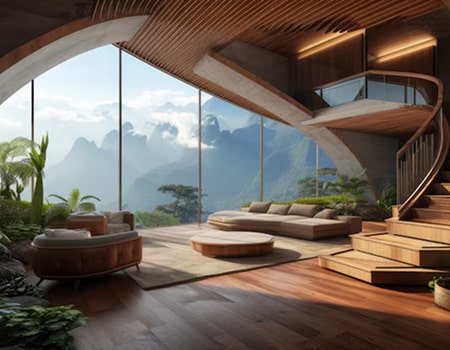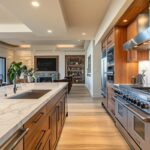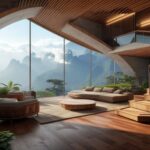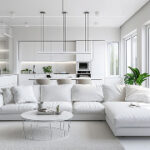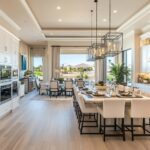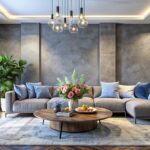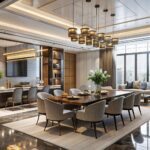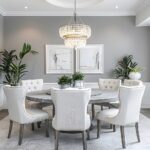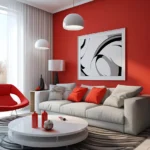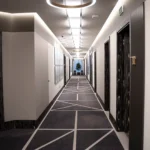Design is shifting. Less about perfection, more about practicality. In 2025, we’re seeing interiors that speak to everyday living—spaces that invite you in, hold your routines, and still manage to look good doing it. The real trend? Balance. Function and comfort are no longer extras—they’re the starting point.
Below are three standout shifts in the design world that are quietly transforming how people live in and love their spaces.
Softened Forms and Curves Are Taking Over
The era of sharp edges and sterile minimalism is starting to fade. Instead, designers are leaning into rounded silhouettes—think curved sofas, arched doorways, circular lighting fixtures, and organically shaped tables. These elements bring a softness that not only changes the look of a room but the feel of it.
Rounded forms tend to evoke calm and make rooms feel more welcoming and intimate. They’re easier on the eye and the body—literally. Curved armrests, soft corners, and plush upholstery signal a space meant to be used, not just admired. It’s comfort without the clutter.

Multifunctional Furniture That Adapts to You
As living spaces get smaller and routines more dynamic, furniture is being asked to do more. And honestly, it’s delivering. A desk that folds into a console. A sofa that expands for guests. Storage built into every available inch. The best part? These pieces don’t scream “utility”—they blend right in.
What’s different now is the attention to detail. Finishes are elegant, proportions are thoughtful, and the function is discreet. Multifunctional furniture no longer looks like a compromise. It feels like an upgrade—especially for people navigating hybrid work, shared apartments, or small family homes.
Intentional Zones Over Open Chaos
Open-concept living had its moment. But now, people want definition—without the walls. Functional zoning is on the rise, using furniture placement, lighting, rugs, and subtle materials to carve out space for different activities. It’s a thoughtful response to how we move through our days.
A living room might double as a workspace during the day, then shift into a reading nook by evening. The key isn’t more space—it’s smarter use of the space you already have. That could mean a tucked-away desk in the dining area, or a soft rug that anchors a conversation spot away from the TV.
It’s not about filling every corner—it’s about giving each corner a clear purpose.
Where It’s All Headed
There’s a noticeable maturity in how design is evolving. It’s less about trends and more about intention. The rise of comfort-driven choices, adaptive furniture, and zoned layouts reflects a larger question people are asking: Does this space work for my life?
Style is still important—but it’s no longer enough. The best interiors today support how you live, not how you pose. They’re lived-in, useful, and emotionally grounded. The kind of spaces that quietly make your day better—without you even realising why.
